The backsplash in a kitchen serves both a functional and aesthetic purpose, protecting walls from spills and splatters while enhancing the overall look of the space. Choosing the right backsplash tile can transform an ordinary kitchen into an extraordinary one. We will explore different aspects of backsplash tile kitchen designs, including types, materials, styles, and installation tips.
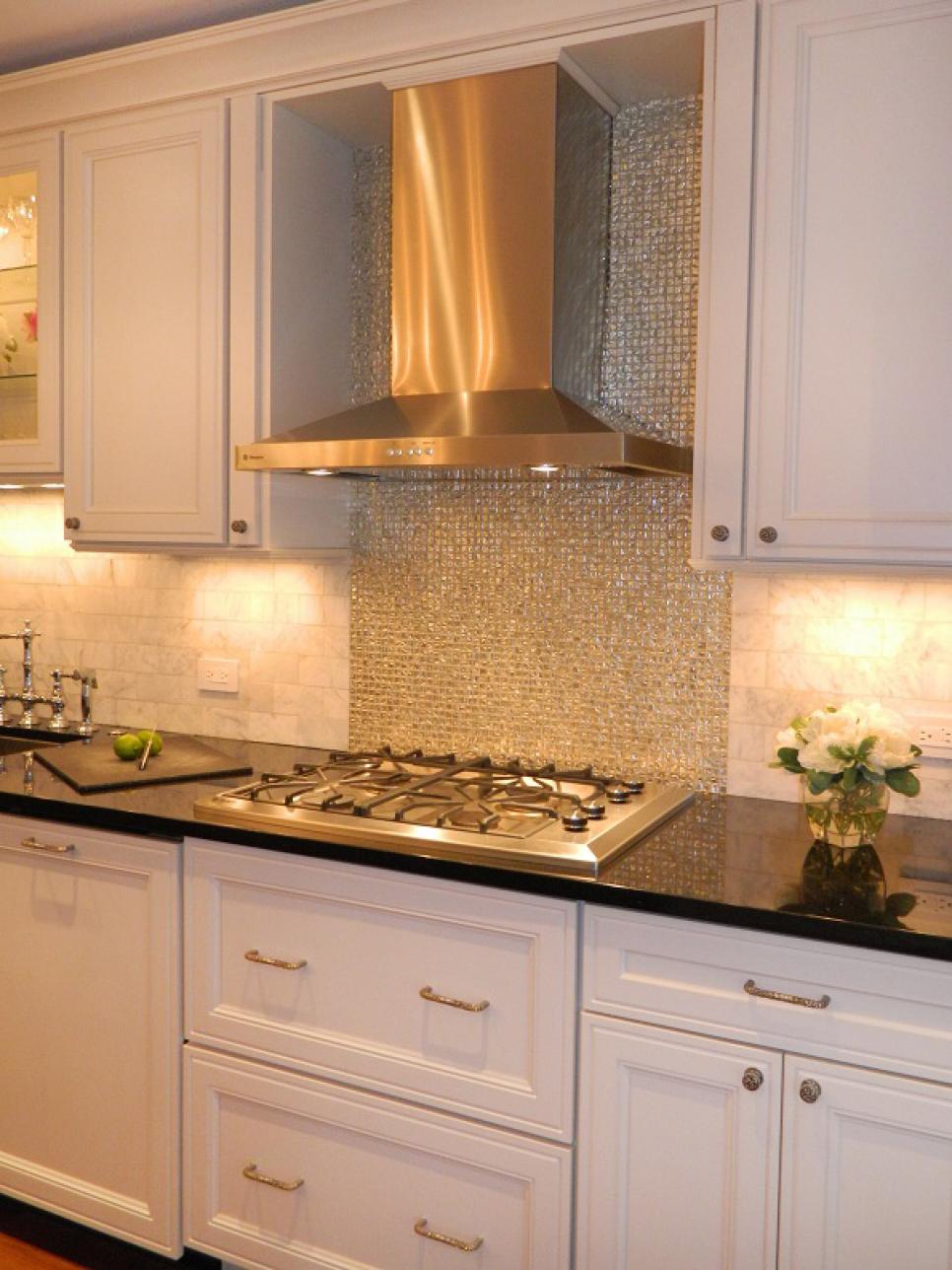
Types of Backsplash Tiles
Ceramic Tiles
Ceramic tiles are a popular choice for kitchen backsplashes due to their versatility, durability, and affordability. They come in a wide range of colors, shapes, and sizes, making it easy to find a design that complements any kitchen decor. Ceramic tiles are also relatively easy to install and maintain, which adds to their appeal.
One of the key benefits of ceramic tiles is their resistance to moisture and stains, which is crucial in a kitchen environment. They can be easily wiped clean with a damp cloth, ensuring that the backsplash remains looking fresh and new even after heavy use. Additionally, ceramic tiles are heat-resistant, making them suitable for installation behind stoves and ovens.
Ceramic tiles can be arranged in various patterns, from simple straight lines to more intricate designs such as herringbone or mosaic. This flexibility allows homeowners to create a unique look that reflects their style. Furthermore, ceramic tiles are available in both glossy and matte finishes, providing additional options for customization.
However, it’s important to note that while ceramic tiles are durable, they can chip or crack if subjected to heavy impact. Therefore, proper installation and handling are essential to ensure longevity. Regular sealing of grout lines can also help prevent discoloration and mold growth.

Glass Tiles
Glass tiles are another popular option for kitchen backsplashes, known for their sleek and modern appearance. They reflect light beautifully, which can make a kitchen feel brighter and more spacious. Glass tiles are available in a wide array of colors and finishes, including frosted, glossy, and textured options.
One of the major advantages of glass tiles is their non-porous nature, which makes them resistant to stains, mold, and mildew. This makes them an excellent choice for areas prone to moisture and spills. Additionally, glass tiles are easy to clean, usually requiring just a simple wipe with a damp cloth to maintain their shine.
Glass tiles can be used to create stunning visual effects, such as shimmering surfaces or dynamic patterns. They can be combined with other materials, like stone or metal, to add depth and interest to the backsplash design. This versatility allows homeowners to experiment with different styles and achieve a custom look.
Despite their many benefits, glass tiles can be more expensive than other options, and they require careful handling during installation to avoid damage. It’s also important to use a suitable adhesive and grout to ensure that the tiles remain securely in place and do not shift over time.

Natural Stone Tiles
Natural stone tiles, including marble, granite, travertine, and slate, bring a touch of elegance and sophistication to any kitchen. Each stone has its unique characteristics, adding texture and visual interest to the backsplash. Natural stone tiles are known for their durability and timeless appeal.
Marble tiles, with their distinctive veining and luxurious appearance, are a favorite for high-end kitchen designs. Granite offers a more rugged look and exceptional durability, making it suitable for both traditional and contemporary kitchens. Travertine and slate provide a more rustic charm, with earthy tones and natural variations that create a warm and inviting atmosphere.
However, natural stone tiles require more maintenance compared to ceramic or glass options. They are porous and can absorb stains if not properly sealed. Regular sealing is necessary to protect the stone from moisture, grease, and other kitchen contaminants. Additionally, natural stone tiles can be more challenging to clean due to their textured surfaces.
The installation of natural stone tiles can also be more complex, often requiring professional expertise to ensure a flawless finish. The weight of the tiles and the need for precise cutting and fitting make DIY installation less practical for this type of backsplash. Despite these challenges, many homeowners find that the beauty and durability of natural stone tiles are well worth the extra effort.

Metal Tiles
Metal tiles are gaining popularity in contemporary kitchen designs due to their sleek and industrial look. They are typically made from stainless steel, copper, or aluminum and can be used to create a striking backsplash that stands out. Metal tiles are highly durable and resistant to heat, making them ideal for areas behind stoves and ovens.
Stainless steel tiles offer a clean and modern appearance that complements a wide range of kitchen styles. They are easy to clean and maintain, as they do not absorb stains or odors. Copper tiles, on the other hand, add warmth and character with their rich, reddish-brown hue that develops a patina over time. Aluminum tiles are lightweight and versatile, available in various finishes and textures.
Metal tiles can be used in combination with other materials to create a unique and dynamic backsplash. For example, a stainless steel backsplash with a row of decorative glass or ceramic tiles can add visual interest and contrast. Metal tiles can also be embossed with patterns or designs to add an extra layer of detail.
While metal tiles are relatively easy to install, they require precise measurements and careful handling to avoid scratches and dents. It’s important to use appropriate adhesive and grout to ensure that the tiles adhere securely to the wall. Additionally, regular cleaning with non-abrasive products is recommended to maintain the tiles’ shine and prevent tarnishing.
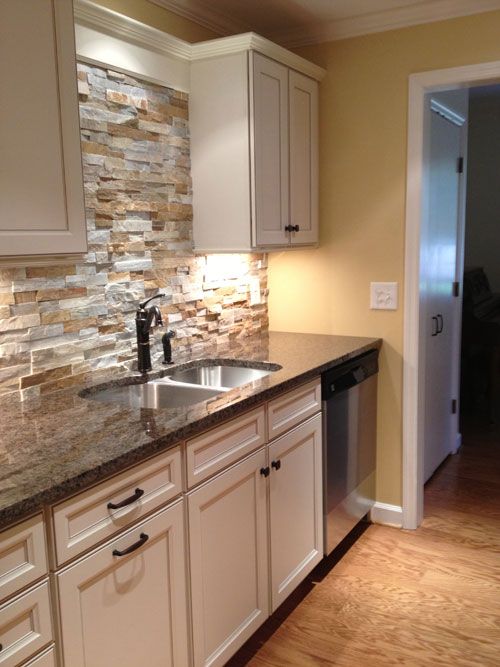
Popular Styles of Backsplash Designs
Subway Tile
Subway tiles are a classic and timeless choice for kitchen backsplashes, characterized by their rectangular shape and usually glossy finish. They gained popularity in the early 20th century and have remained a staple in kitchen design due to their simplicity and versatility. Subway tiles are typically installed in a staggered brick-like pattern, but they can also be arranged in herringbone, vertical, or diagonal layouts for a more modern twist.
The clean lines and neutral color options of subway tiles make them suitable for a wide range of kitchen styles, from traditional to contemporary. White subway tiles are especially popular as they create a bright and airy feel, but other colors such as gray, black, or even vibrant hues can be used to add a pop of color to the kitchen.
Subway tiles are also known for their ease of maintenance. Their smooth surface can be wiped clean with a damp cloth, and they are resistant to stains and moisture. This makes them an ideal choice for busy kitchens where spills and splatters are common. Additionally, subway tiles are relatively affordable and widely available, making them a practical option for budget-conscious homeowners.
One potential drawback of subway tiles is that their popularity means they are widely used, which can make them feel less unique. However, by experimenting with different layouts, grout colors, and tile sizes, homeowners can create a custom look that reflects their style. For example, using contrasting grout can highlight the geometric pattern of the tiles, adding depth and interest to the backsplash.
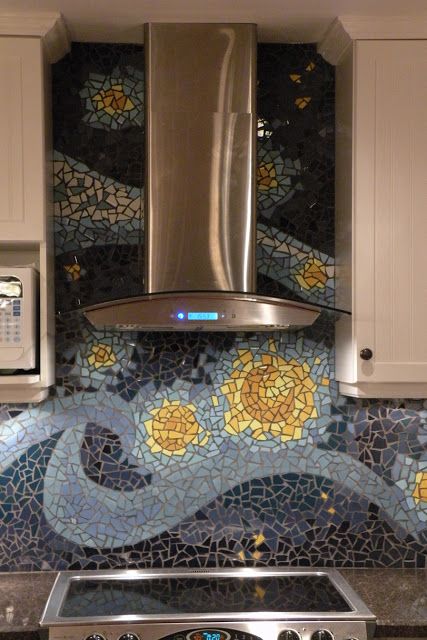
Mosaic Tile
Mosaic tiles are a versatile and creative option for kitchen backsplashes, consisting of small pieces of glass, ceramic, stone, or metal arranged to create intricate patterns and designs. These tiles come in sheets with mesh backing, which makes installation easier compared to placing individual tiles. Mosaic tiles can add a unique and artistic touch to any kitchen, making them a popular choice for homeowners looking to make a statement.
One of the key advantages of mosaic tiles is their ability to create detailed and colorful designs. They can be used to form intricate patterns, such as floral motifs, geometric shapes, or abstract art. This makes them ideal for adding a focal point to the kitchen, such as behind the stove or sink. Mosaic tiles can also be used to complement other types of tiles, adding texture and visual interest to the overall design.
Mosaic tiles are available in a wide range of materials, including glass, ceramic, natural stone, and metal. Glass mosaic tiles are particularly popular for their reflective properties, which can make a kitchen feel brighter and more spacious. Natural stone mosaics add a touch of luxury and sophistication, while metal mosaics offer a contemporary and industrial look.
Despite their many benefits, mosaic tiles can be more challenging to install compared to larger tiles. The small size of the individual pieces requires precise placement and careful grouting to ensure a smooth and even finish. Additionally, mosaic tiles can be more expensive than other options, particularly if custom designs are involved. However, the unique and personalized look they provide can make them well worth the investment.

Hexagon Tile
Hexagon tiles, also known as hex tiles, have a distinctive six-sided shape that adds a geometric and modern touch to kitchen backsplashes. These tiles can be used to create a variety of patterns and designs, from simple and understated to bold and eye-catching. Hexagon tiles are available in a range of sizes, colors, and materials, making them a versatile choice for any kitchen.
One of the main appeals of hexagon tiles is their ability to create a sense of movement and depth in a space. The geometric shape draws the eye and can make a backsplash stand out as a focal point in the kitchen. Hexagon tiles can be arranged in a traditional honeycomb pattern or combined with other shapes and colors to create a custom design.
Hexagon tiles are available in materials such as ceramic, porcelain, natural stone, and glass. Ceramic and porcelain hex tiles are durable and easy to maintain, making them a practical choice for busy kitchens. Natural stone hex tiles add a touch of luxury and texture, while glass hex tiles offer a sleek and modern look with their reflective surfaces.
Installing hexagon tiles can be more complex than traditional rectangular tiles due to their shape. Precise measurements and careful placement are required to ensure a seamless and professional finish. It’s also important to choose the right grout color, as contrasting grout can highlight the unique shape of the tiles, while matching grout can create a more subtle and cohesive look.
Despite the challenges, hexagon tiles are a popular choice for homeowners looking to add a contemporary and stylish touch to their kitchen. Their unique shape and versatile design options make them a standout choice for backsplashes, adding both visual interest and practicality to the space.

Patterned Tile
Patterned tiles are an excellent way to add character and personality to a kitchen backsplash. These tiles feature decorative designs, such as floral motifs, geometric patterns, or intricate scrollwork, that can create a stunning visual impact. Patterned tiles are available in various materials, including ceramic, porcelain, and cement, offering a wide range of options for different styles and preferences.
One of the key benefits of patterned tiles is their ability to serve as a focal point in the kitchen. Whether used to cover the entire backsplash or as an accent, these tiles can draw attention and add a unique touch to the space. Patterned tiles can be used to complement solid-colored tiles or to create a bold statement on their own.
Ceramic and porcelain patterned tiles are durable and easy to maintain, making them a practical choice for kitchen backsplashes. Cement tiles, while more porous, offer a unique and artisanal look that can add a rustic charm to the kitchen. It’s important to properly seal cement tiles to protect them from stains and moisture, ensuring they remain beautiful and functional over time.
When selecting patterned tiles, it’s essential to consider the overall design and color scheme of the kitchen. Coordinating the colors and patterns with other elements, such as cabinetry, countertops, and flooring, can create a cohesive and harmonious look. Additionally, the layout and installation of patterned tiles require careful planning to ensure that the designs align correctly and create a seamless finish.
Patterned tiles can be more expensive than plain tiles, particularly if custom designs or high-quality materials are used. However, the unique and eye-catching look they provide can make them a worthwhile investment for homeowners seeking to elevate their kitchen design. With proper care and installation, patterned tiles can add lasting beauty and charm to any kitchen.

Choosing the Right Material
Durability and Maintenance
When selecting backsplash tiles for a kitchen, durability and maintenance are key considerations. The kitchen is a high-traffic area that is exposed to heat, moisture, and food splatters, so the chosen material must be able to withstand these conditions. Ceramic and porcelain tiles are popular choices for their durability and low maintenance requirements. They are resistant to stains, moisture, and heat, making them ideal for kitchen environments.
Glass tiles are also durable and easy to clean, but they require careful handling during installation to avoid cracks or chips. Natural stone tiles, while durable, need regular sealing to protect them from stains and moisture. The porous nature of stone can make it more susceptible to damage if not properly maintained. Metal tiles, such as stainless steel and copper, are durable and heat-resistant but can be prone to scratches and require regular cleaning to maintain their appearance.
Maintenance is another crucial factor to consider. Ceramic and porcelain tiles are easy to clean with a damp cloth and mild detergent. Glass tiles also require minimal maintenance, but streaks and fingerprints can be more noticeable. Natural stone tiles need regular sealing and cleaning with specific products to prevent damage. Metal tiles require gentle cleaning with non-abrasive products to avoid scratching the surface.
Ultimately, the choice of material will depend on the homeowner’s priorities and lifestyle. Those seeking low-maintenance options may prefer ceramic, porcelain, or glass tiles, while those looking for a more luxurious and unique look might opt for natural stone or metal tiles. Understanding the durability and maintenance requirements of each material can help homeowners make an informed decision that suits their needs and preferences.

Aesthetic Appeal
The aesthetic appeal of backsplash tiles is a significant consideration in kitchen design. The backsplash is a prominent feature that can greatly influence the overall look and feel of the kitchen. When choosing tiles, it’s important to consider how they will complement the existing elements, such as cabinetry, countertops, and flooring.
Ceramic and porcelain tiles offer a wide range of colors, patterns, and finishes, making them versatile options for various styles. Glossy finishes can create a sleek and modern look, while matte finishes provide a more understated and sophisticated appearance. Glass tiles are known for their reflective properties, which can make a kitchen feel brighter and more spacious. They are available in a multitude of colors and finishes, including frosted and textured options.
Natural stone tiles bring a touch of elegance and luxury to the kitchen. Each stone has unique patterns and variations that add character and depth to the backsplash. Marble tiles, with their distinctive veining, are a popular choice for high-end kitchens, while granite and slate offer a more rustic charm. Metal tiles, such as stainless steel and copper, provide a contemporary and industrial look that can make a bold statement.
Patterned tiles are an excellent way to add visual interest and personality to the kitchen. Whether featuring intricate designs, geometric patterns, or floral motifs, patterned tiles can serve as a focal point and enhance the overall design. Hexagon and mosaic tiles offer unique shapes and layouts that can create dynamic and eye-catching backsplashes.
When selecting tiles, it’s essential to consider the desired aesthetic and how it aligns with the overall design of the kitchen. Coordinating the colors, patterns, and textures with other elements can create a cohesive and harmonious look. The right backsplash tiles can elevate the kitchen’s design, adding both beauty and functionality to the space.
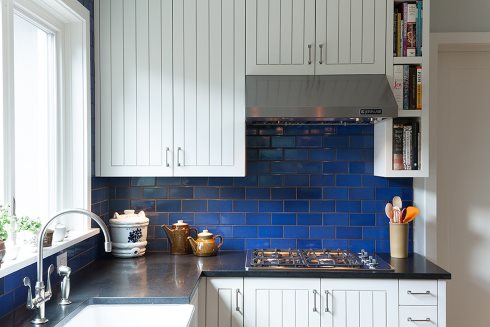
Cost and Budget
Cost is an important factor to consider when choosing backsplash tiles for a kitchen. The price of tiles can vary significantly based on the material, quality, and design. Ceramic and porcelain tiles are generally the most affordable options, making them popular choices for budget-conscious homeowners. These tiles offer a wide range of designs and finishes at a reasonable cost, providing good value for money.
Glass tiles tend to be more expensive than ceramic or porcelain tiles due to their material and manufacturing process. However, their aesthetic appeal and durability can justify the higher cost. Natural stone tiles, such as marble, granite, and travertine, are typically more expensive due to their unique characteristics and the labor-intensive extraction process. The luxurious look and feel of natural stone can add significant value to a kitchen, making them a worthwhile investment for those with a higher budget.
Metal tiles, including stainless steel and copper, also tend to be on the higher end of the price spectrum. Their durability, heat resistance, and modern appearance can make them a desirable choice for contemporary kitchens. Patterned and mosaic tiles, particularly those with custom designs or high-quality materials, can be more expensive due to the intricate detailing and craftsmanship involved.
In addition to the cost of the tiles, it’s important to consider the installation expenses. Professional installation can ensure a flawless finish, but it comes at an additional cost. Some materials, such as natural stone and mosaic tiles, may require specialized installation techniques and tools, further increasing the overall expense. Homeowners should also factor in the cost of grout, adhesive, and sealing products, which are necessary for proper installation and maintenance.
To manage costs effectively, homeowners should establish a budget and explore different options within their price range. Comparing prices from various suppliers and considering sales or discounts can help find the best deals. While it’s important to stay within budget, investing in high-quality tiles can enhance the kitchen’s aesthetic appeal and longevity, providing lasting value and satisfaction.

Environmental Impact
The environmental impact of backsplash tiles is an increasingly important consideration for eco-conscious homeowners. The production, transportation, and disposal of tiles can have significant environmental consequences, so choosing sustainable materials and practices can help reduce the carbon footprint of a kitchen renovation.
Ceramic and porcelain tiles are generally considered environmentally friendly options due to their natural raw materials and long lifespan. They are made from clay and other natural minerals, which are abundant and non-toxic. Additionally, these tiles are highly durable and can last for decades, reducing the need for frequent replacements. Some manufacturers also offer recycled ceramic tiles, further minimizing their environmental impact.
Glass tiles are another eco-friendly option, particularly those made from recycled glass. The production of recycled glass tiles requires less energy and resources compared to new glass, making them a sustainable choice. Glass tiles are also fully recyclable at the end of their lifespan, reducing landfill waste.
Natural stone tiles, while beautiful and durable, have a more significant environmental impact due to the extraction and transportation processes. Quarrying stone requires substantial energy and can disrupt local ecosystems. However, natural stone is a long-lasting material that can endure for many years, reducing the need for replacement. Homeowners interested in natural stone can look for suppliers that practice sustainable quarrying and prioritize ethical sourcing.
Metal tiles, such as stainless steel and copper, are highly durable and recyclable, making them a sustainable option. The production of metal tiles does require significant energy, but their long lifespan and recyclability can offset some of the environmental impact. Choosing recycled metal tiles can further reduce their carbon footprint.
To minimize the environmental impact of a kitchen backsplash, homeowners can also consider using low-VOC (volatile organic compounds) adhesives and grouts. These products emit fewer harmful chemicals into the air, promoting better indoor air quality. Additionally, supporting local manufacturers can reduce the environmental impact associated with transportation and contribute to the local economy.

Installation Tips and Techniques
Preparing the Surface
Proper surface preparation is crucial for a successful backsplash tile installation. The first step is to ensure that the wall surface is clean, dry, and smooth. Any existing wallpaper, paint, or debris should be removed, and the wall should be wiped down with a damp cloth to remove dust and grease. For newly constructed walls, a coat of primer can help improve adhesion and create a stable base for the tiles.
If the wall has any holes, cracks, or uneven areas, these should be repaired before installation. Small holes and cracks can be filled with spackle or joint compounds, while larger imperfections may require patching with drywall. Sanding the patched areas smoothly will create an even surface for the tiles. It’s important to allow the repairs to fully dry before proceeding with the installation.
In areas prone to moisture, such as behind sinks or stoves, it’s recommended to apply a waterproof membrane or backer board to the wall. This extra layer of protection can prevent water damage and mold growth, ensuring the longevity of the backsplash. The backer board should be securely fastened to the wall studs and sealed at the seams to create a watertight barrier.
Before applying any adhesive, it’s a good idea to lay out the tiles on a flat surface to determine the best arrangement. This step allows for adjustments and ensures that the final installation will look balanced and cohesive. Marking reference lines on the wall with a level can help guide the placement of the tiles, ensuring that they are aligned and level throughout the installation process.
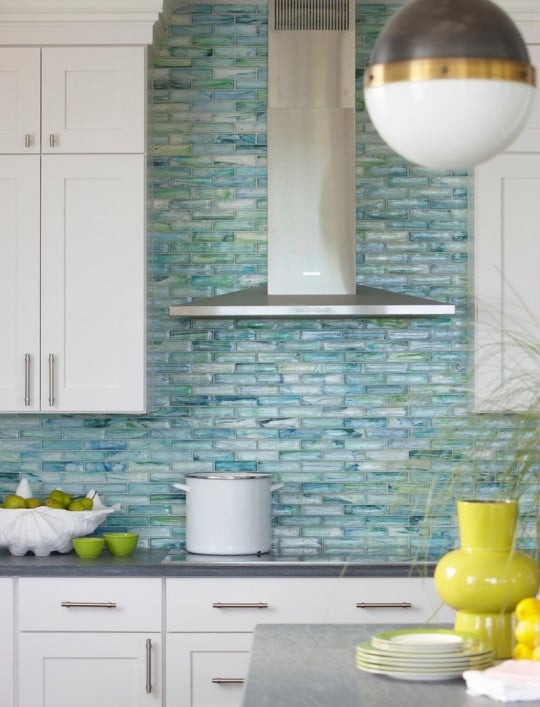
Applying Adhesive and Setting Tiles
Once the surface is properly prepared, the next step is to apply the adhesive and set the tiles. There are different types of adhesives available, including thin-set mortar, mastic, and epoxy. Thin-set mortar is a popular choice for most backsplash installations due to its strong bond and versatility. Mastic is suitable for smaller tiles and areas with less moisture exposure, while epoxy is a high-strength adhesive used for heavy or non-porous tiles.
Using a notched trowel, spread a layer of adhesive onto a small section of the wall, starting from the bottom and working upwards. The size of the notches on the trowel should match the size of the tiles being used. Press the tiles firmly into the adhesive, using spacers to maintain consistent gaps between them. It’s important to periodically check that the tiles are level and aligned, making adjustments as necessary.
For areas around electrical outlets, switches, or other obstacles, tiles may need to be cut to fit. A tile cutter or wet saw can be used to make precise cuts, ensuring that the tiles fit snugly around the obstacles. Safety precautions, such as wearing goggles and gloves, should be taken when cutting tiles to avoid injury.
As the adhesive begins to set, periodically remove the spacers and clean any excess adhesive from the tile surfaces and grout lines. It’s important to follow the manufacturer’s instructions regarding drying time before proceeding to the next step. Allowing the adhesive to fully cure will ensure a strong and durable bond between the tiles and the wall.
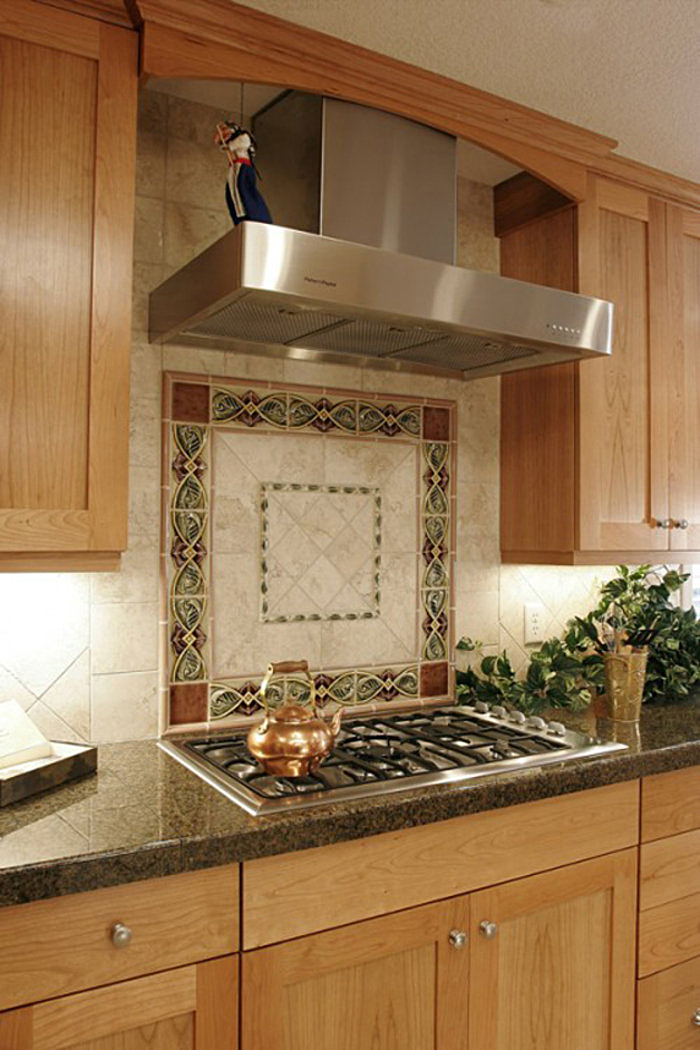
Grouting and Sealing
Grouting is the process of filling the gaps between the tiles to create a smooth and finished surface. There are different types of grout available, including sanded, unsanded, and epoxy grout. Sanded grout is used for wider joints (1/8 inch or more) and provides added strength, while unsanded grout is suitable for narrower joints. Epoxy grout is highly durable and resistant to stains, making it a good choice for high-traffic areas.
Before applying grout, it’s important to allow the adhesive to fully cure, as per the manufacturer’s recommendations. Mix the grout according to the instructions, ensuring a smooth and consistent texture. Using a rubber float, spread the grout diagonally across the tiles, pressing it firmly into the joints. Work in small sections to prevent the grout from drying out before it can be smoothed.
After applying the grout, use a damp sponge to wipe away excess grout from the tile surfaces. Rinse the sponge frequently to avoid spreading grout residue. Once the grout has dried, a haze may form on the tiles, which can be removed with a grout haze remover or a damp cloth. It’s important to avoid using excessive water during this process, as it can weaken the grout.
Sealing the grout is an important step to protect it from stains, moisture, and mildew. Grout sealer should be applied once the grout has fully cured, following the manufacturer’s instructions. Applying a thin, even coat with a brush or applicator bottle will ensure that the grout is properly sealed. For natural stone tiles, sealing the tiles themselves can also provide added protection and enhance their appearance.

Final Touches and Maintenance
After the grout and sealer have dried, the final touches can be applied to complete the backsplash installation. This includes caulking the edges where the backsplash meets the countertop, cabinets, and other surfaces. Using a high-quality, mold-resistant caulk will ensure a clean and watertight seal. Applying painter’s tape along the edges can help create straight and even caulk lines.
Regular maintenance is essential to keep the backsplash looking its best. For ceramic and porcelain tiles, a simple wipe down with a damp cloth and mild detergent is usually sufficient. Glass tiles can be cleaned with glass cleaner or a mixture of water and vinegar to remove streaks and fingerprints. Natural stone tiles require specific cleaning products designed for stone surfaces to avoid damage.
It’s also important to periodically check the grout and reseal it as needed to maintain its protective properties. Any cracks or gaps in the grout should be repaired promptly to prevent moisture from seeping behind the tiles. For metal tiles, regular cleaning with non-abrasive products will help maintain their shine and prevent tarnishing.
By following these installation and maintenance tips, homeowners can ensure that their backsplash remains beautiful and functional for years to come. The right backsplash can enhance the overall design of the kitchen, adding both aesthetic appeal and practical benefits. With careful planning and attention to detail, a well-designed backsplash can transform a kitchen into a stylish and inviting space.
Related Posts:
- Kitchen Backsplash Ideas For Off White Cabinets
- 6×6 Kitchen Backsplash Tiles
- 12×24 Tile Kitchen Backsplash
- 3d Kitchen Backsplash
- Green Kitchen Backsplash Ideas
- How To Regrout Kitchen Backsplash
- Faux Copper Backsplash Tiles For Kitchen
- Granite Kitchen Backsplash Photos
- White Kitchen Cabinets Ideas For Countertops And Backsplash
- Rustic Modern Kitchen Backsplash